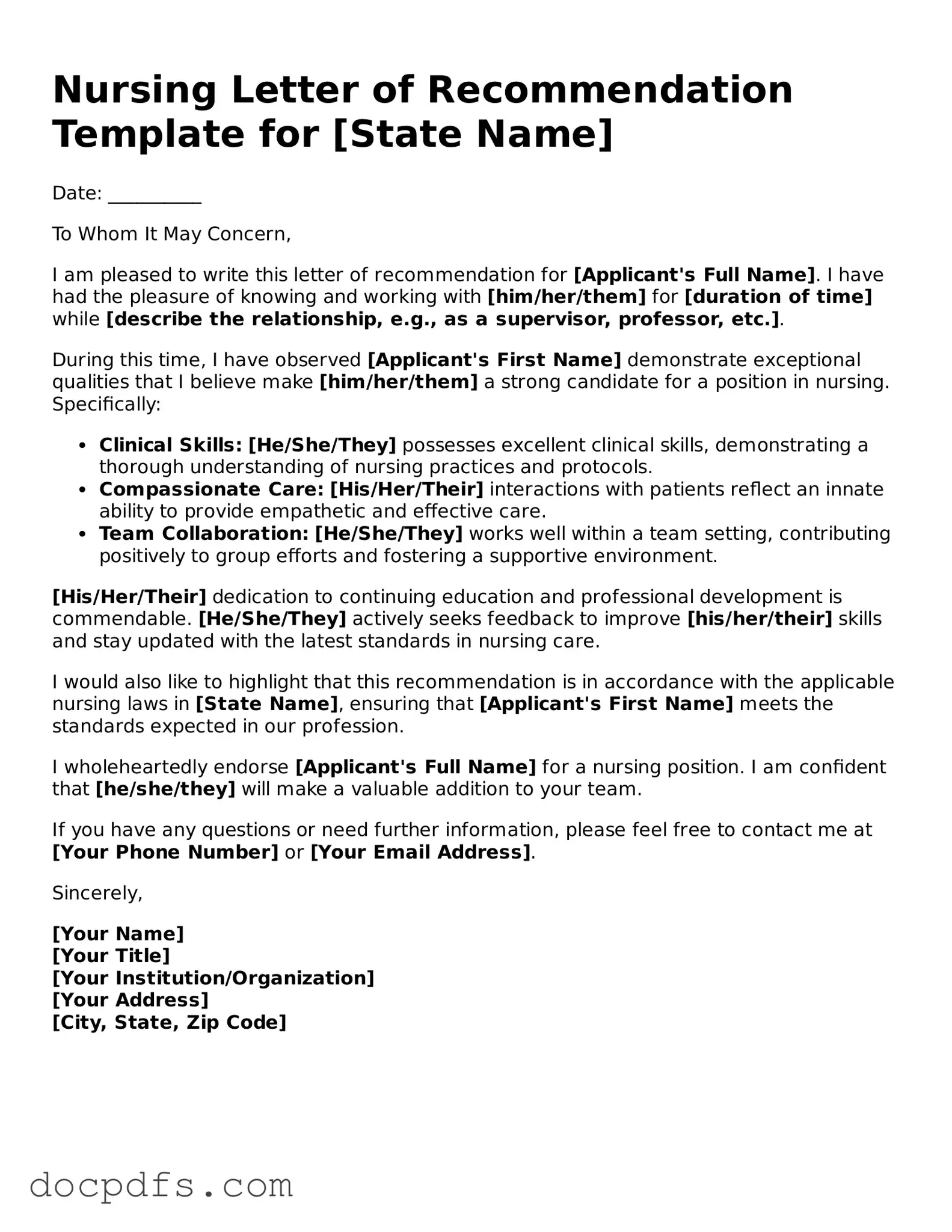A Nursing Letter of Recommendation form is a document that provides a formal endorsement of a nursing candidate's skills, experience, and character. Typically, it is written by a supervisor, instructor, or colleague who can attest to the candidate's qualifications and suitability for a nursing program or job. This letter is often required as part of the application process for nursing schools or positions in healthcare settings.
Who should write the Nursing Letter of Recommendation?
The ideal writers for a Nursing Letter of Recommendation are individuals who have worked closely with the candidate in a professional or academic setting. Common choices include:
-
Clinical supervisors or managers
-
Nursing instructors or professors
-
Healthcare professionals who have collaborated with the candidate
It is essential that the writer can provide specific examples of the candidate's abilities and contributions to the nursing field.
A comprehensive Nursing Letter of Recommendation should include the following elements:
-
The writer's relationship to the candidate, including how long they have known each other.
-
An assessment of the candidate's clinical skills and competencies.
-
Examples of the candidate's work ethic, teamwork, and communication skills.
-
Any relevant achievements or contributions made by the candidate in their nursing practice.
-
A summary of why the candidate would be a good fit for the nursing program or position they are applying for.
The letter should be formatted in a professional manner. It is advisable to use a standard business letter format, which includes:
-
The writer's contact information at the top
-
The date
-
The recipient's contact information
-
A formal greeting
-
A clear and concise body
-
A professional closing
Typically, the letter should be typed, printed on letterhead if possible, and signed by the writer.
How long should the letter be?
A Nursing Letter of Recommendation should ideally be one page long. This length allows the writer to provide sufficient detail about the candidate while remaining concise. A well-structured letter with clear, focused content is more impactful than a lengthy one filled with unnecessary information.
What is the process for submitting the letter?
The submission process for a Nursing Letter of Recommendation can vary depending on the institution or employer. Generally, the candidate will provide the writer with specific submission instructions, which may include:
-
Submitting the letter directly to the institution or employer
-
Including the letter in the candidate's application packet
-
Using an online portal for digital submission
It is important for the candidate to communicate these details clearly to the writer to ensure timely and proper submission.
